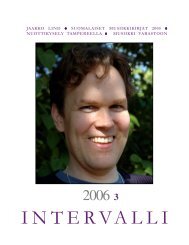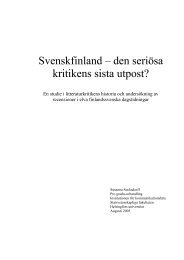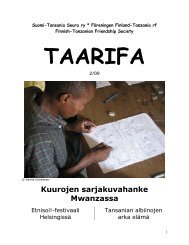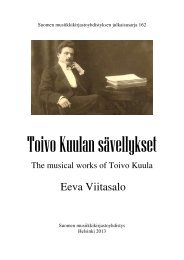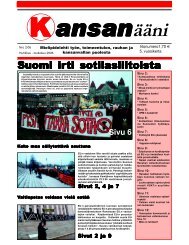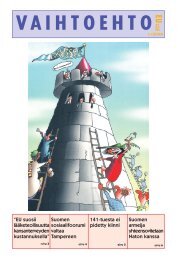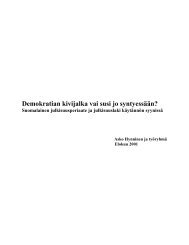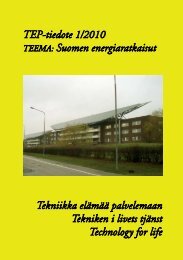RUNOUDEN PUOLUSTUS
RUNOUDEN PUOLUSTUS
RUNOUDEN PUOLUSTUS
You also want an ePaper? Increase the reach of your titles
YUMPU automatically turns print PDFs into web optimized ePapers that Google loves.
1985. Suomennoksessa oli perusteltua jättää osa lainauksista (erityisesti<br />
runokatkelmat) alkukieliseen muotoon; raja kääännettyjen ja alkukielisten<br />
lainausten välillä muodostui hieman häilyväksi; suomentaja<br />
toivo, että tämä lisää esseeseen uuden – lukijasta riippuen – antiabsorptiivisen<br />
tai absorptiivisen ulottuvuuden.<br />
Normaalien ihmisten tunteita (”Emotions of Normal People”, DC)<br />
Näkymä ei-mistään (”A View From Nowhere”, DC<br />
Herpaantumatonta hilseilyä (”Besotted Desquamation”, WS). Vrt. suomentajan<br />
”lausunto” Tukholmassa 16. syyskuuta 2006: ”I’m going to read a poem<br />
by Charles Bernstein, ’Besotted Desquamation’, in Finnish. This poem<br />
can be seen as consisting of 27 sections, with all the words in each<br />
individual section sharing the same initial letter. When I sat down to<br />
translate the poem into Finnish, I was disappointed, confused even, to<br />
find that the words my dictionary suggested for replacement seemed to<br />
begin with just about any letter. Nothing of the harmony and order of the<br />
Bernstein original to be found there! I began to feel desperate, and to<br />
have doubts as to the very fundaments of the profession of translation. I<br />
mean, how can we imagine to translate anything, when we cannot even<br />
get the first letters right? Eventually, I think I did find a problem to the<br />
solution. What I did was to put the original away – for good, I never<br />
looked at it again. And why should I have?After all, as with all poems<br />
(and as we all only too well know), it was only a pale shadow of the<br />
original intentions of the poet, whatever these may have been. I also<br />
closed the English-Finnish dictionary I had been consulting, opening a<br />
Finnish-Finnish one instead, as I think Charles had done with an English-<br />
English one in his time. I then proceeded, not to translate, not even to<br />
rewrite, but to write the poem, exactly the way Charles had done before<br />
me – here perhaps echoing the project of the immemorable Pierre<br />
Menard, in that story by Jorge Luis Borges, to write Cervantes’ Don<br />
Quixote in the early Twentieth Century. I feel confident that the results of<br />
my experiment not only prove the validity of my approach, but also go a<br />
way to redeem the honour of the business of translation in general. Can<br />
there be a better guarantee of the faithfulness of a translation than when<br />
the translator has gone through exactly the same motions with the<br />
originator? To this day, no one has been able to point out in my poem<br />
any of those small changes in tone, or field of reference, of individual<br />
words and phrases that are so frustrating in even the best translations of<br />
poetry – not to speak about outright errors and misunderstandings, as<br />
when someone once made Count Basie a nobleman (Furst Basie), or<br />
another had a famous General, by name Assembly, speak in a big United<br />
252




